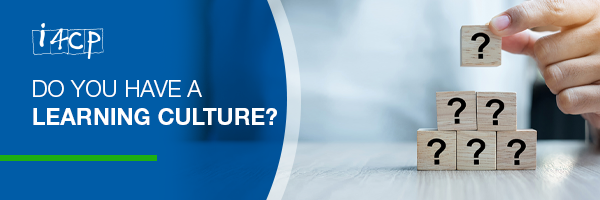Why Building a Learning Culture is So Critical

In the years that i4cp has been studying organizational culture, one thing has always been clear: companies that have a learning culture generally are very healthy.
My favorite example is Microsoft. While I talk about Microsoft a lot, I continue to believe they are one of the best examples of what a successful culture renovation looks like—and they represent what can happen when you embrace a culture of learning.
Not long after Satya Nadella became CEO of Microsoft, he was very clear on how important learning was to their culture change efforts:
“At Microsoft, we’re aspiring to have a living, learning culture with a growth mindset that allows us to learn from ourselves and our customers. These are the key attributes of the new culture at Microsoft, and I feel great about how it seems to be resonating and how it’s seen as empowering.”
 Almost no company was using the phrase “growth mindset” until Satya and his team popularized it; today I hear that term used constantly throughout the corporate landscape. Microsoft continues to have a growth mindset, and while CHRO Kathleen Hogan and others would say they still have a long way to go, they exemplify that not only is having a workforce of “learn-it-alls” important, but that creating a culture of learning is entirely possible—and can be done relatively quickly (though not with a lot of dedication, focus, and hard work).
Almost no company was using the phrase “growth mindset” until Satya and his team popularized it; today I hear that term used constantly throughout the corporate landscape. Microsoft continues to have a growth mindset, and while CHRO Kathleen Hogan and others would say they still have a long way to go, they exemplify that not only is having a workforce of “learn-it-alls” important, but that creating a culture of learning is entirely possible—and can be done relatively quickly (though not with a lot of dedication, focus, and hard work).
Traits of a learning culture
What does a healthy learning culture look like? Our research outlines seven key traits:
- Active knowledge sharing permeates the organization
- Learning is an espoused organizational value
- Leaders (at all levels) are involved in teaching others and reinforcing learning’s importance
- Learning is reinforced in hiring and in leadership development
- The organization measures learning’s effectiveness
- Managers are rewarded for mobility and development
- A culture of learning is about 4-way accountability (organization, leader, manager & learner)
We’ve entered a new world of hybrid and flexible work. In many organizations, this means new capabilities, talent, and skills are needed. Organizations with healthy learning cultures will have a more curious, innovative, and adaptive workforce, but also processes and programs in place to move talent and identify and catalogue hidden skills among that talent (if you’re an i4cp member, I encourage you to download our guidebook on building a skills database).
Having a learning culture—and a growth mindset—enables an organization to adapt quickly to sudden changes in the marketplace.
Our research study, Accelerating Total Workforce Readiness, looks at how prepared companies believe their workforces are for future needs (only 30% of large employers worldwide say they are) and what they can do differently to close readiness gaps. We found that organizations with high degrees of workforce readiness are 3x more likely to have cultures that embrace change and 5x more likely to have leaders who embrace new ways of working.
Steps to take
Here are a few learning-specific steps to take:
- Hold leaders accountable for learning. High-performance organizations are 3x more likely to hold leaders at all levels accountable for actively demonstrating the importance of learning. This includes incorporating accountability into leadership development programs, performance management, promotional opportunities, and compensation assessments.
- Ensure employees understand how their jobs contribute to organizational results. It's important to ensure that each worker has an individual development plan (IDP) that supports both their career and organizational needs, that progress with IDPs is regularly reviewed, and that they are incentivized for learning. Those incentives do not need to be financial; recognition sometimes can be just as powerful.
- Meet the learner where they’re at. Everyone learns differently, and each person has different skills they may need to develop. While the pandemic likely shook most companies that were still shackled to traditional learning approaches free, it’s essential to continue to invest in the learning experience—from technology to format and everything in between. For more detail, I encourage you to watch or listen to this conversation I recently had with Ramona Arora, Ph.D., Vice President of Global Talent Development with Dell.
Instant Assessment: Does your organization have a learning culture?
We’ve just debuted a new and free instant assessment that poses the question: do you have a learning culture? The assessment will help you better understand how the state of your policies and workflows compare to those in high-performance organizations. Take the assessment .
Webinar: Why Learning is the Key to a Healthy Culture
Recently I was joined by Brenda Sugrue, Global Chief Learning Officer at EU, for a webinar that explored the actions leaders can take to create a culture of “learn-it-alls” and to enable talent mobility. Brenda and I covered a lot of ground in our hour long conversation, a recording of which is available here. Watch the Webinar.
Data to Consider







